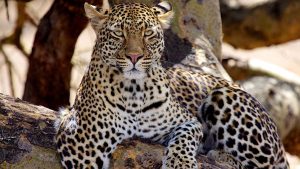Ngorongoro Crater
Ngorongoro is a Tanzanian ‘must-see’. The Ngorongoro Crater, a caldera or ‘collapsed-in’ volcano – while only covering 260 km² – includes a diverse range of habitats including montane forest, grasslands, Acacia forests, a salt-lake and swampy areas. The diversity of the habitat provides the home to an incredibly wide range of birds and animals, including the Big Five, in a concentrated area. Accommodation around the rim of the crater provides spectacular views and easy access to the crater.
While the Ngorongoro Conservation Area spans just over 8 000 km², the Ngorongoro Crater – the area’s most well-known feature – spans only 260 km² of this land. And it is precisely its small size that makes it a Tanzanian ‘must see’!
Being a caldera, or collapsed-in volcano, it has steep walls 610 m high, creating a ‘bowl’ in which vast numbers of animals roam. Within this small area is a diverse range of habitats – montane forest on the rain-facing wall and grassland on the drier west wall. The floor is a vast grassland with a couple of Acacia forests, the salt-lake, Lake Magadi, and Ngoitokitok Spring, which creates a swampy area in the east of the crater.
Due to the diversity of the habitats on the crater’s floor (and sides), an incredible number of different birds and animals (including the Big Five) call Ngorongoro Crater ‘home’, providing visitors with spectacular game-viewing in gorgeous surroundings.
Around the rim of the crater are various accommodation establishments (mostly high-end, top-class luxury) that provide visitors with incredible views across the crater floor.
Animals of Ngorongoro
Within the Ngorongoro Crater, there is a huge concentration of wildlife, including all of the Big Five. hippo and crocodile, zebra, a wide range of antelope and plains game live here. Regular sightings of the highly endangered black rhino are reported. It’s estimated that about 25 000 big animals live within this natural enclosure. Expect to see many animals within a short space of time in the fertile ‘bowl’ created by the caldera.
Ngorongoro Crater is also a special place for birders. The salt lake in the crater is often home to hundreds of beautiful, pink flamingos and birds of prey soar through the skies above.



